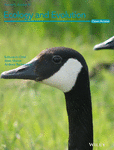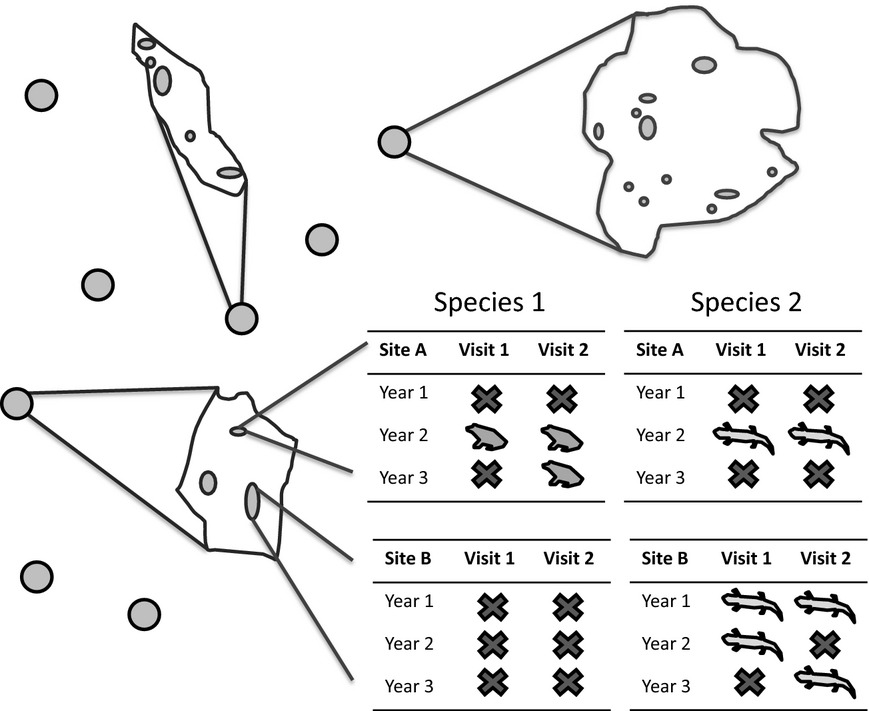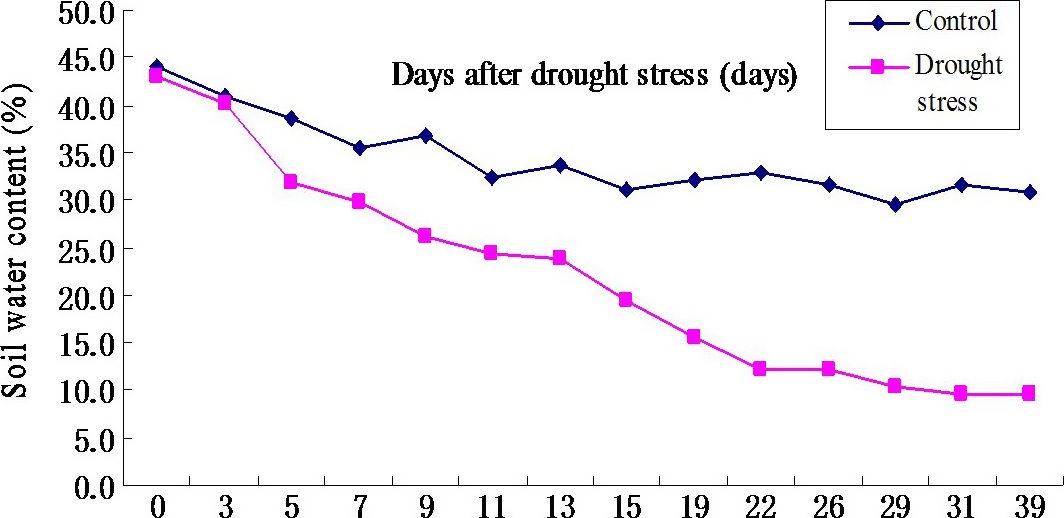Journal list menu
Export Citations
Download PDFs
Issue Information
Original Research
Estimating occupancy dynamics for large-scale monitoring networks: amphibian breeding occupancy across protected areas in the northeast United States
- Pages: 4735-4746
- First Published: 27 September 2015
Interactive effects of predation risk and conspecific density on the nutrient stoichiometry of prey
- Pages: 4747-4756
- First Published: 06 October 2015
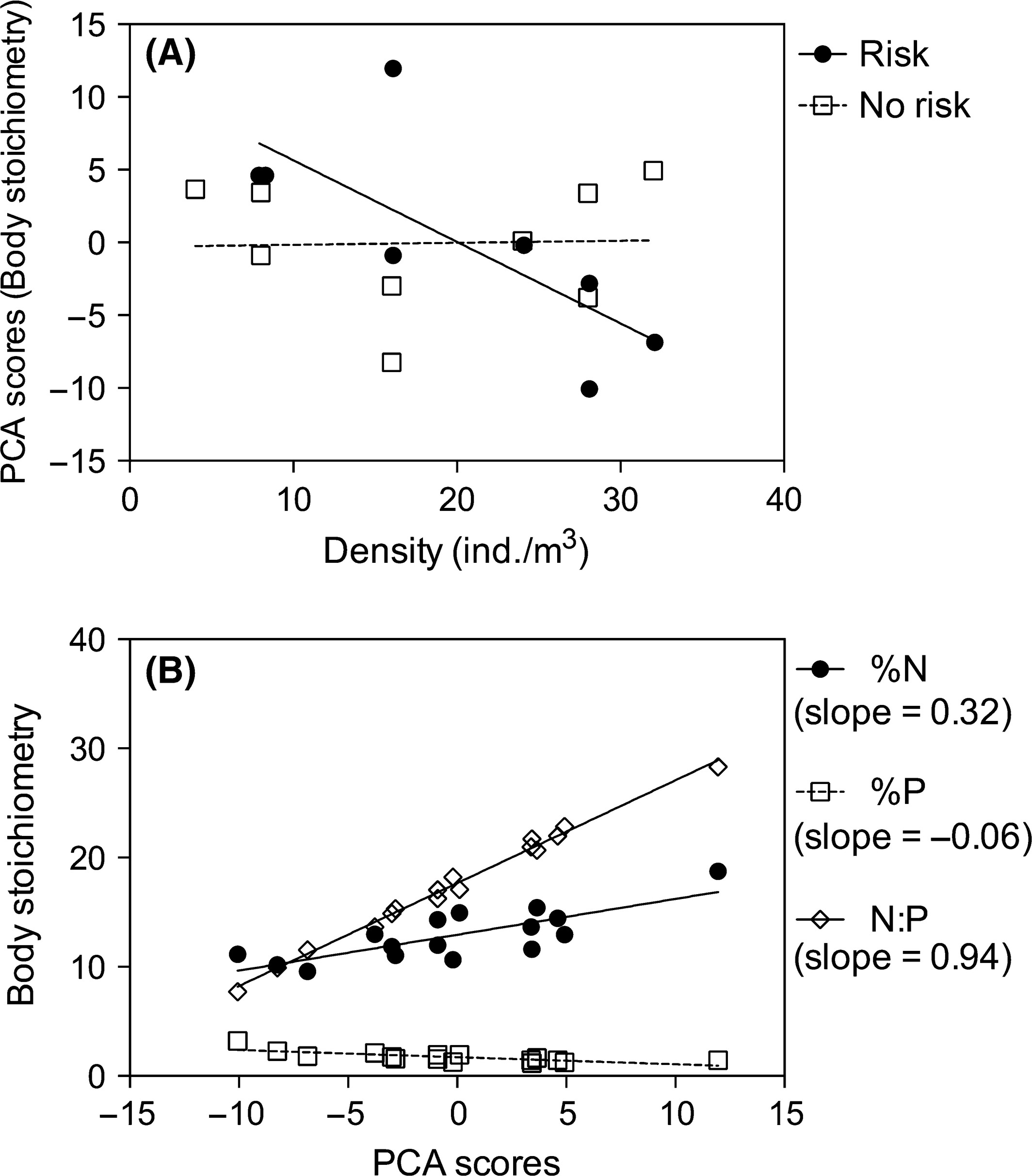
In this study, we tested the effects of predation risk on prey nutrient stoichiometry (body and excretion). In addition, we tested, at a constant predation risk, differences in prey responses to predation risk varying conspecific density. We found that prey tadpoles adjust their body nutrient stoichiometry in response to predation risk, and this effect is affected by conspecific density.
Review
Is a community still a community? Reviewing definitions of key terms in community ecology
- Pages: 4757-4765
- First Published: 07 October 2015
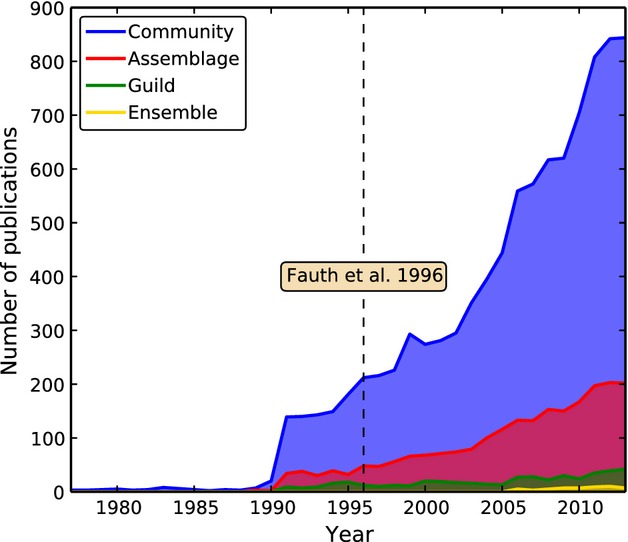
We employ a multi-faceted approach to assess present day definitions and interpretations of key terms in community ecology. There remains much confusion over term clarity, often leading to synonymy. We attempt to provide a clear framework for the the use of popular terms important across all ecological subdisciplines.
Original Research
Asymmetrical nature of the Trollius–Chiastocheta interaction: insights into the evolution of nursery pollination systems
- Pages: 4766-4777
- First Published: 08 October 2015
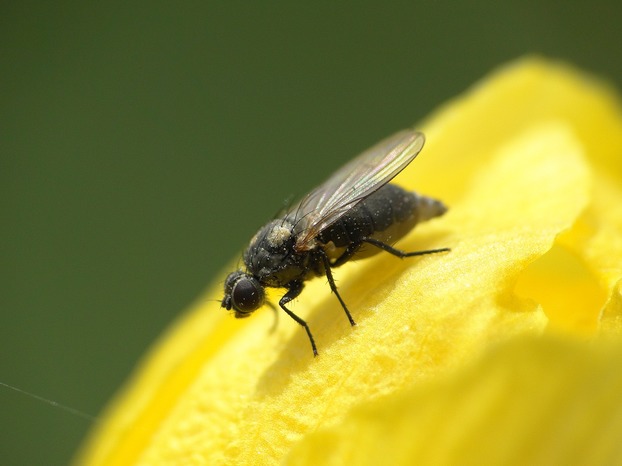
The interaction between Trollius europaeus and Chiastocheta flies is cited as an example of obligate and mutualistic plant-insect interactions. The flies reproduce only on the plant, which in turn was assumed to be pollinated only by the flies. Contrasting with the above hypothesis, we found that the relative female fitness is similar in fly-hosting and fly-free Trollius populations – a result of lower numbers of seeds produced but germinating at a higher rate in the latter populations. This suggests that the interaction evolved by maximization of the male flower function, i.e. higher pollen export by the flies, as a by-product benefit of visitation by otherwise parasitic flies.
Rainbow trout in seasonal environments: phenotypic trade-offs across a gradient in winter duration
- Pages: 4778-4794
- First Published: 08 October 2015
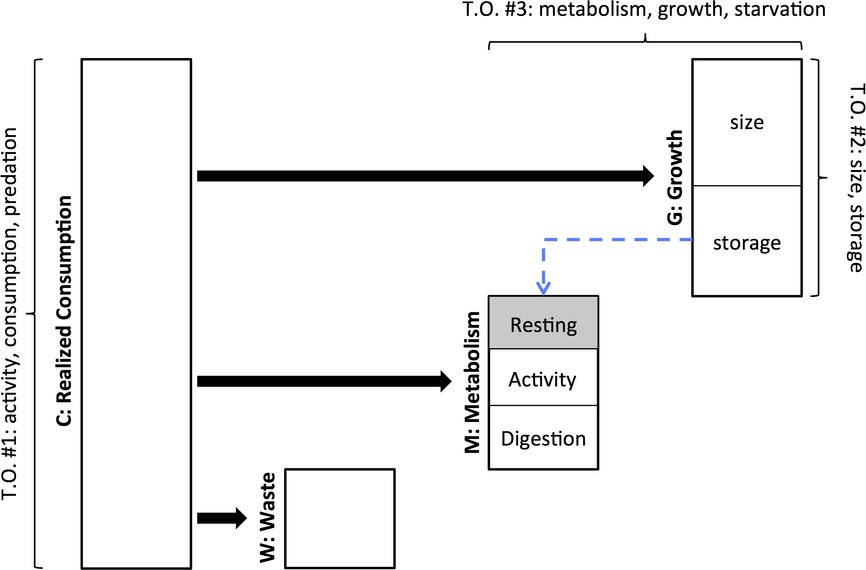
Survival through periods of resource scarcity depends on the balance between metabolic demands and energy storage. In rainbow trout, we did not observe a trade-off between growth and predation risk related to foraging rate, nor did we observe a trade-off between growth and storage. Our findings suggest that there may be a trade-off between growth rate and starvation resistance mediated by metabolic rate.
The transcriptomic and evolutionary signature of social interactions regulating honey bee caste development
- Pages: 4795-4807
- First Published: 08 October 2015
Unmanned Aircraft Systems complement biologging in spatial ecology studies
- Pages: 4808-4818
- First Published: 08 October 2015

In this study, we assess the usefulness of UAS overflights: (1) to get data to model the distribution of free-ranging cattle for a comparison with results obtained from GPS-GSM collared cattle and (2) to predict species densities for a comparison with actual density in Doñana Biological Reserve (South of Spain). UAS and GPS-GSM derived data models provided similar distribution patterns. Predictions from the UAS model overestimated cattle densities, which may be associated to higher aggregated distributions of this species.
A comparative approach to testing hypotheses for the evolution of sex-biased dispersal in bean beetles
- Pages: 4819-4828
- First Published: 08 October 2015
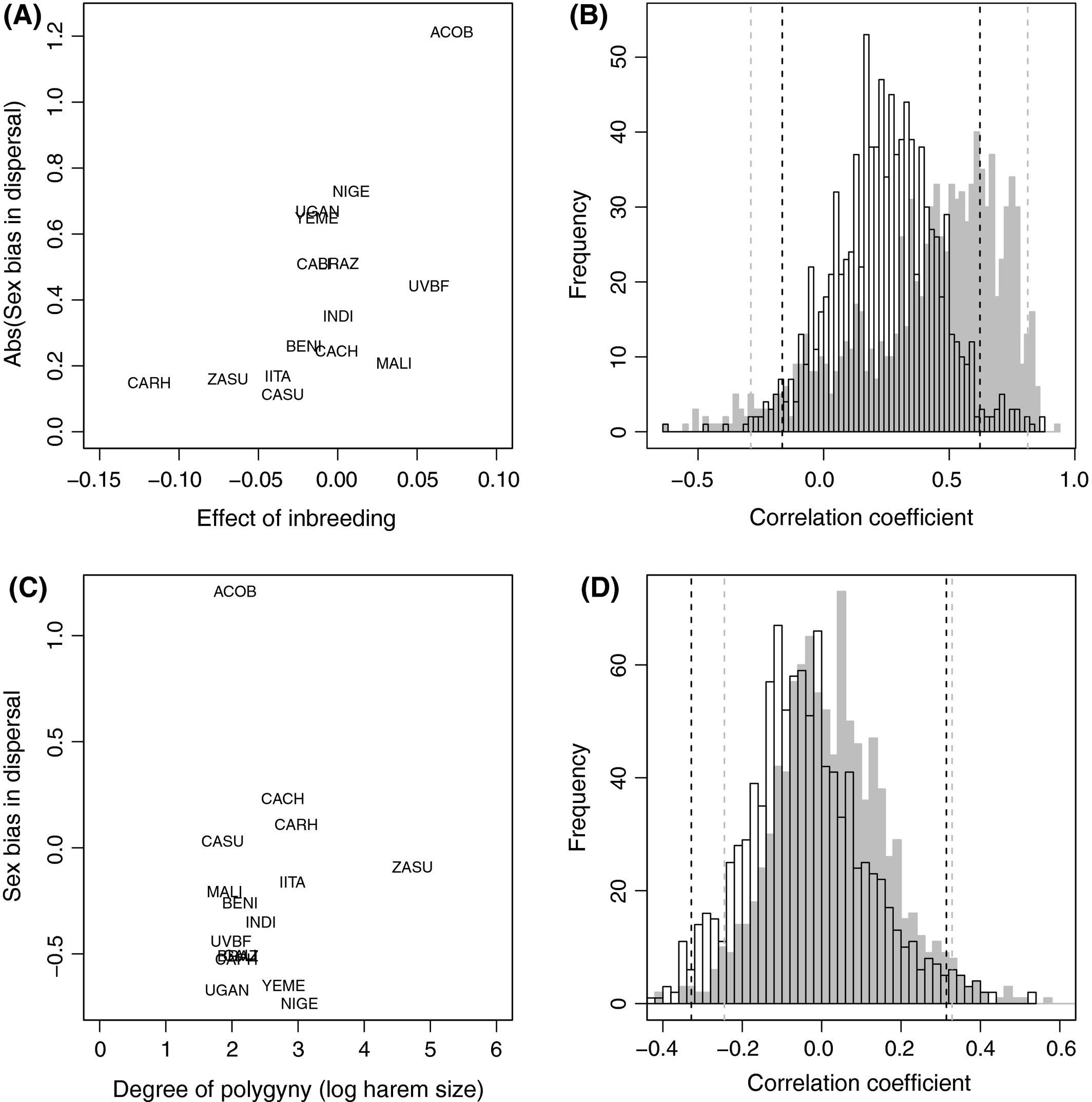
Traits correlations across groups. A, C, Joint posterior means for (A) sex bias in dispersal (absolute value of the log ratio of female-to-male dispersal distance, indicating bias in either direction) and effect of inbreeding (proportional effect of inbreeding on offspring recruitment), and (C) sex bias in dispersal (signed value of the log ratio of female-to-male dispersal distance) and degree of polygyny (log number of female mates per male, or harem size). Locations of 4-letter taxon symbols (Table 1) show bivariate means. B, D, Posterior probabilities for correlation between absolute dispersal bias and inbreeding effect (B) and signed dispersal bias and polygyny (D). Gray bars show the correlation of raw trait values, and unfilled bars show the correlation of the phylogenetically independent contrasts. Vertical dashed lines represent bounds of the 95% credible intervals for the correlations of raw trait values (gray) and phylogenetically independent contrasts (black).
Effects of fasting and nutritional restriction on the isotopic ratios of nitrogen and carbon: a meta-analysis
- Pages: 4829-4839
- First Published: 08 October 2015
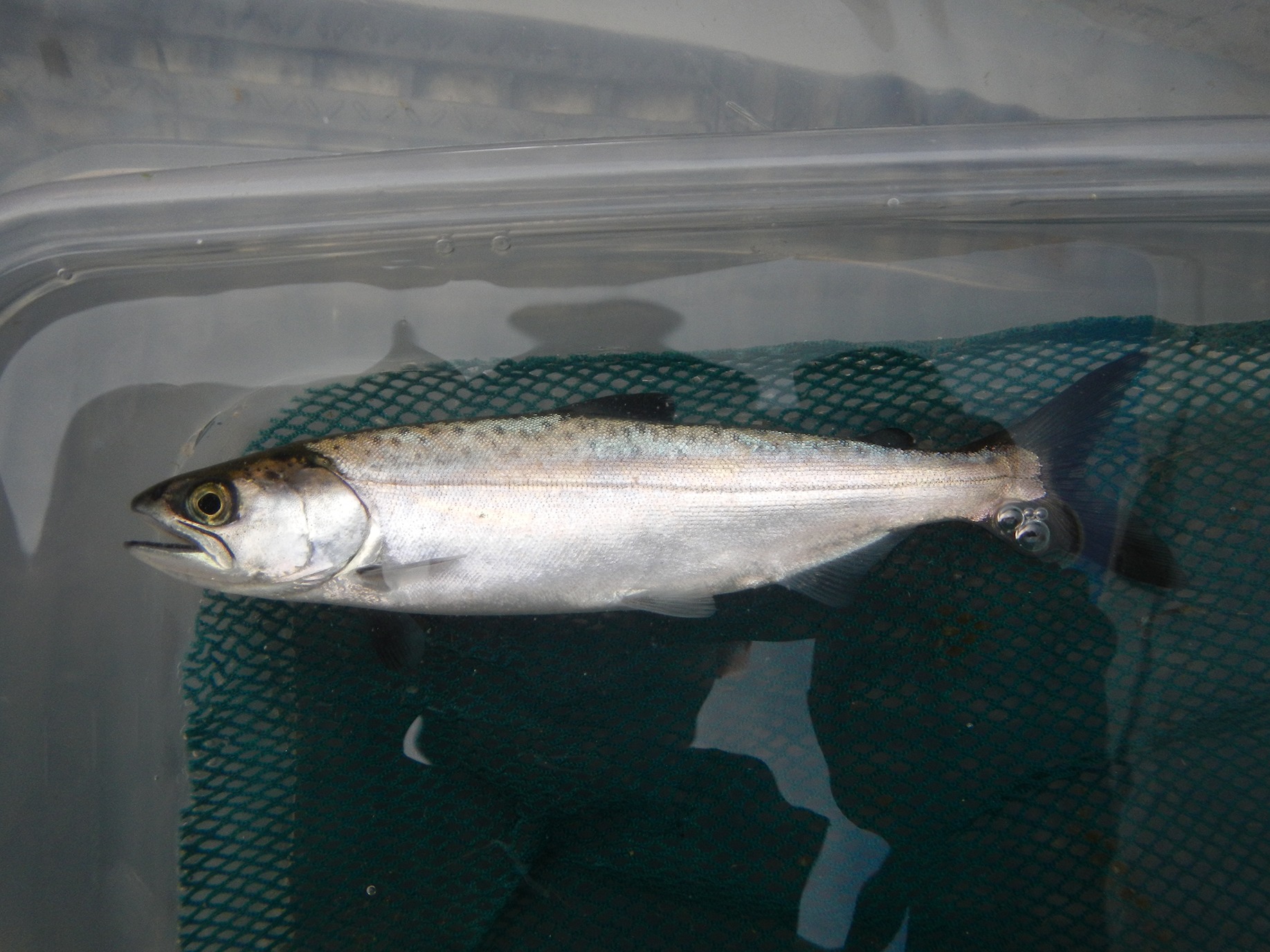
A laboratory experiment and meta-analysis were performed to determine how fasting influences estimates of stable isotopes. We found that the only supported moderator was tissue type, and we found significant increases in stable isotopes of nitrogen with fasting that are approximately one-seventh of a trophic level.
Defoliation reduces soil biota – and modifies stimulating effects of elevated CO2
- Pages: 4840-4848
- First Published: 08 October 2015
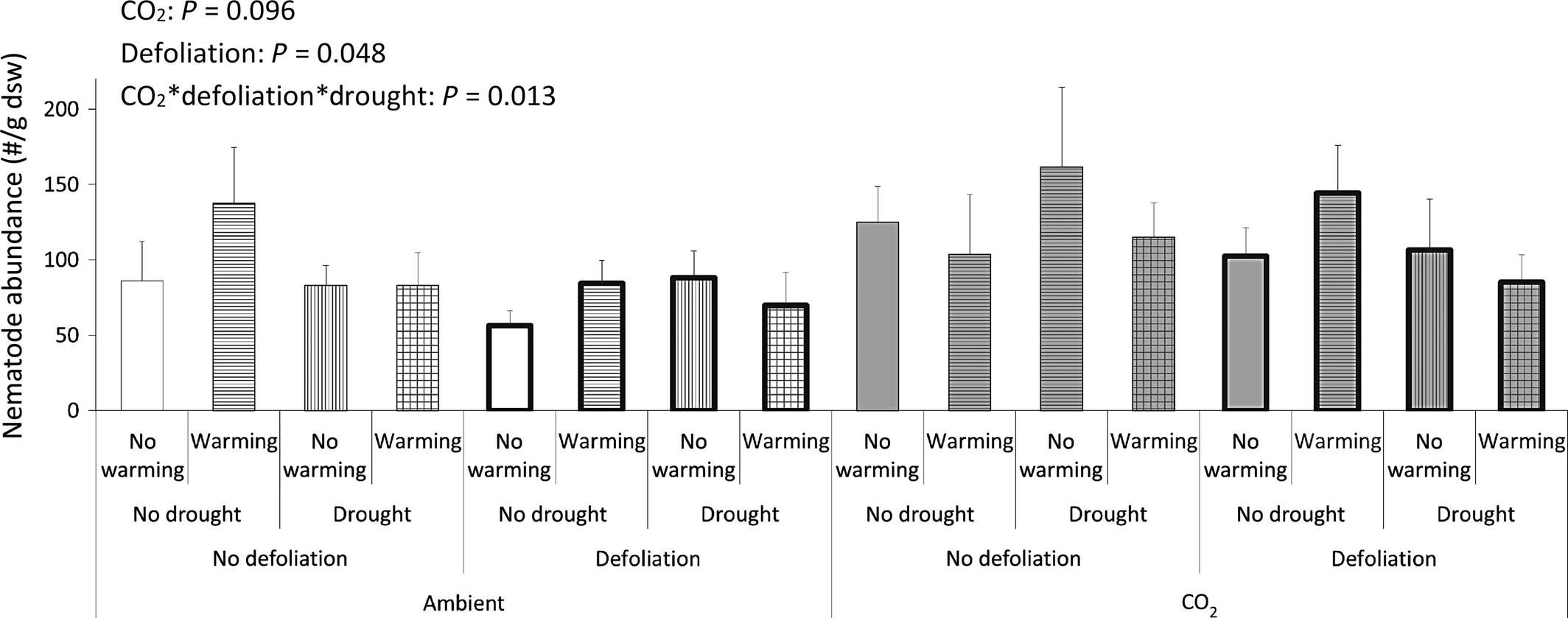
During active plant growth defoliation affected soil biota negatively implying that plants conserve resources. The negative defoliation effect was maintained at elevated CO2 where nutrients are more limiting. This challenges the idea that plants via exudation of organic carbon stimulate their rhizosphere biota when in need of nutrients.
Evolution along the Great Rift Valley: phenotypic and genetic differentiation of East African white-eyes (Aves, Zosteropidae)
- Pages: 4849-4862
- First Published: 12 October 2015
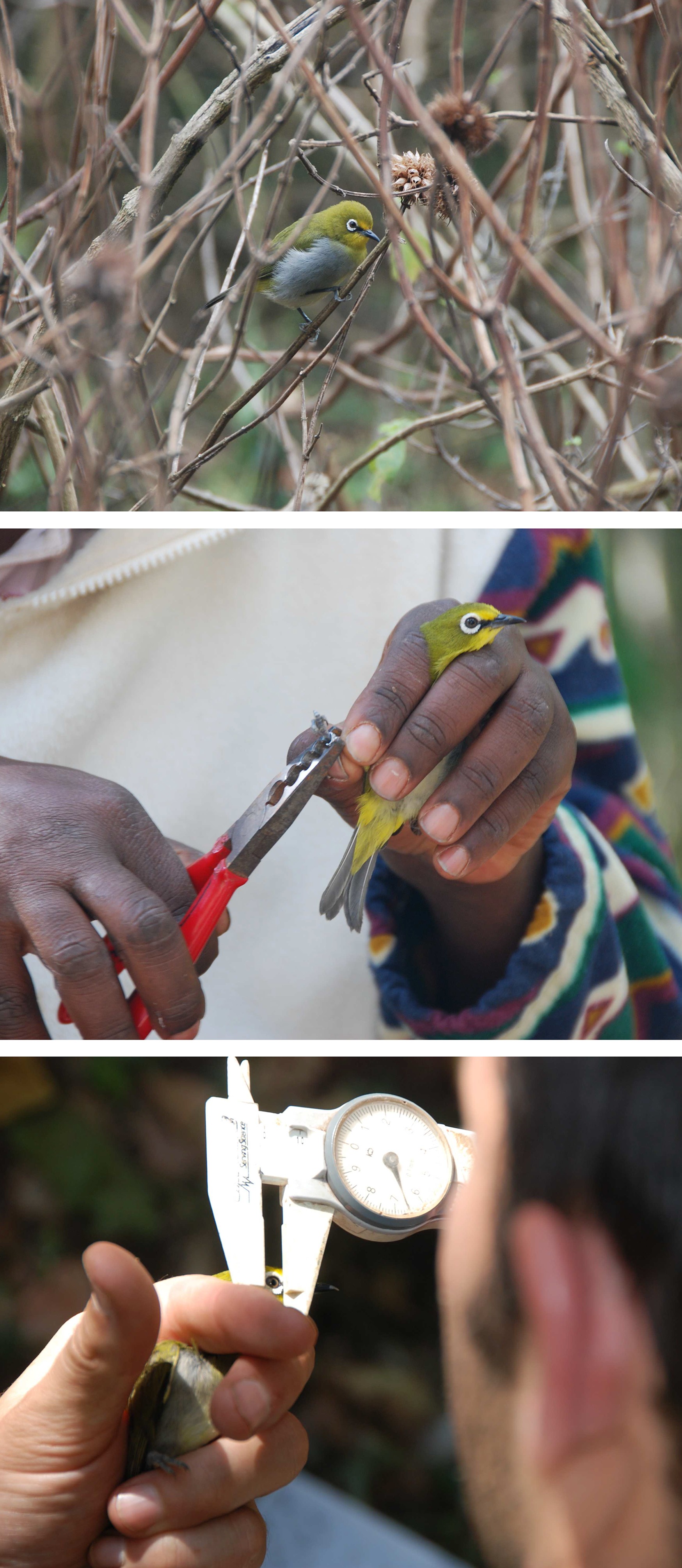
White-eyes are known as a “great speciator” and form various species over the highland-lowland mosaic of East Africa. In this contribution, we disentangle evolutionary processes driving phenotypic and genetic uniqueness, including representatives from the East African highlands and its surrounding lowland savannahs (such as Zosterops kulalensis).
Warning coloration can be disruptive: aposematic marginal wing patterning in the wood tiger moth
- Pages: 4863-4874
- First Published: 12 October 2015
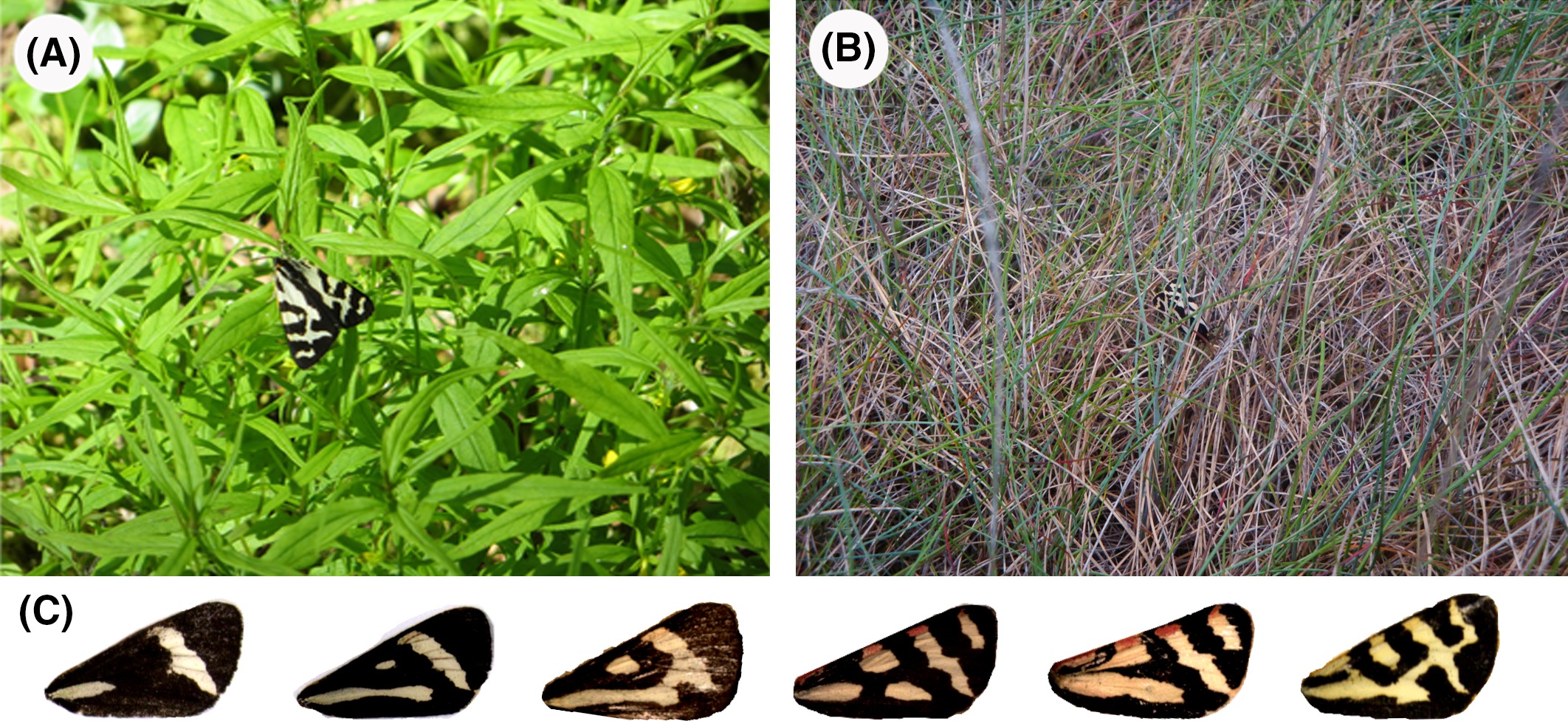
We hypothesized warning wing pattern of a wood tiger moth can have disruptive function and tested it by presenting fake moths with different marginal wing patterns to great tits. The predator has no cognitive or preferential bias for pattern marginality per se, while prey with marginal patterns survived better than non-marginal ones. The results suggest that some warning color patterns can have a disruptive function.
Ocean acidification and temperature increase impact mussel shell shape and thickness: problematic for protection?
- Pages: 4875-4884
- First Published: 12 October 2015
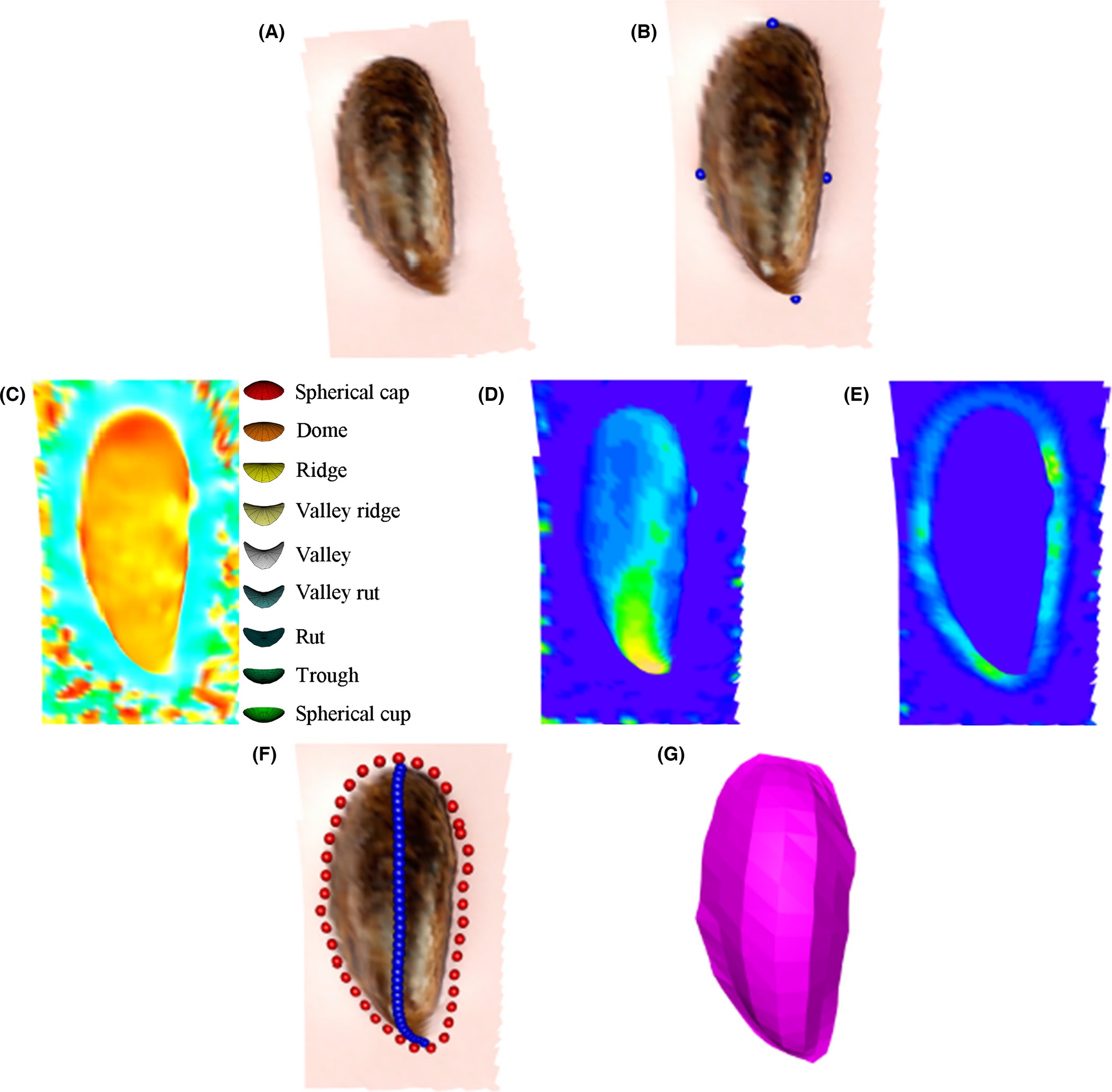
Shape analysis allocation of mussel shell ridge, perimeter, and surface representation shown for, (A) 3D image of mussel shell, (B) manual landmarks, (C) shape index of mussel shell (coloured according to the colour key from green (cup) through blue (valley) and yellow (ridge) to red (cap)), (D) ridge curvature values (coloured topographically), (E) perimeter curvature values (coloured topographically), (F) ridge and perimeter curves, and (G) rendered surface representation of mussel shell (n = 4 per treatment).
Population and genetic outcomes 20 years after reintroducing bobcats (Lynx rufus) to Cumberland Island, Georgia USA
- Pages: 4885-4895
- First Published: 12 October 2015

In 1988–1989, 32 bobcats Lynx rufus were reintroduced to Cumberland Island, Georgia, USA, from which they had previously been extirpated. We returned to Cumberland Island in 2012 to estimate abundance and effective population size of the present-day bobcat population, as well as to quantify genetic diversity and inbreeding. We estimate a current census population size of only 14.4 individuals, with an effective population size (Ne) of 5–8 breeding individuals; however, levels of genetic diversity remain high compared to other mammalian carnivores.
Priority effects of early successional insects influence late successional fungi in dead wood
- Pages: 4896-4905
- First Published: 12 October 2015
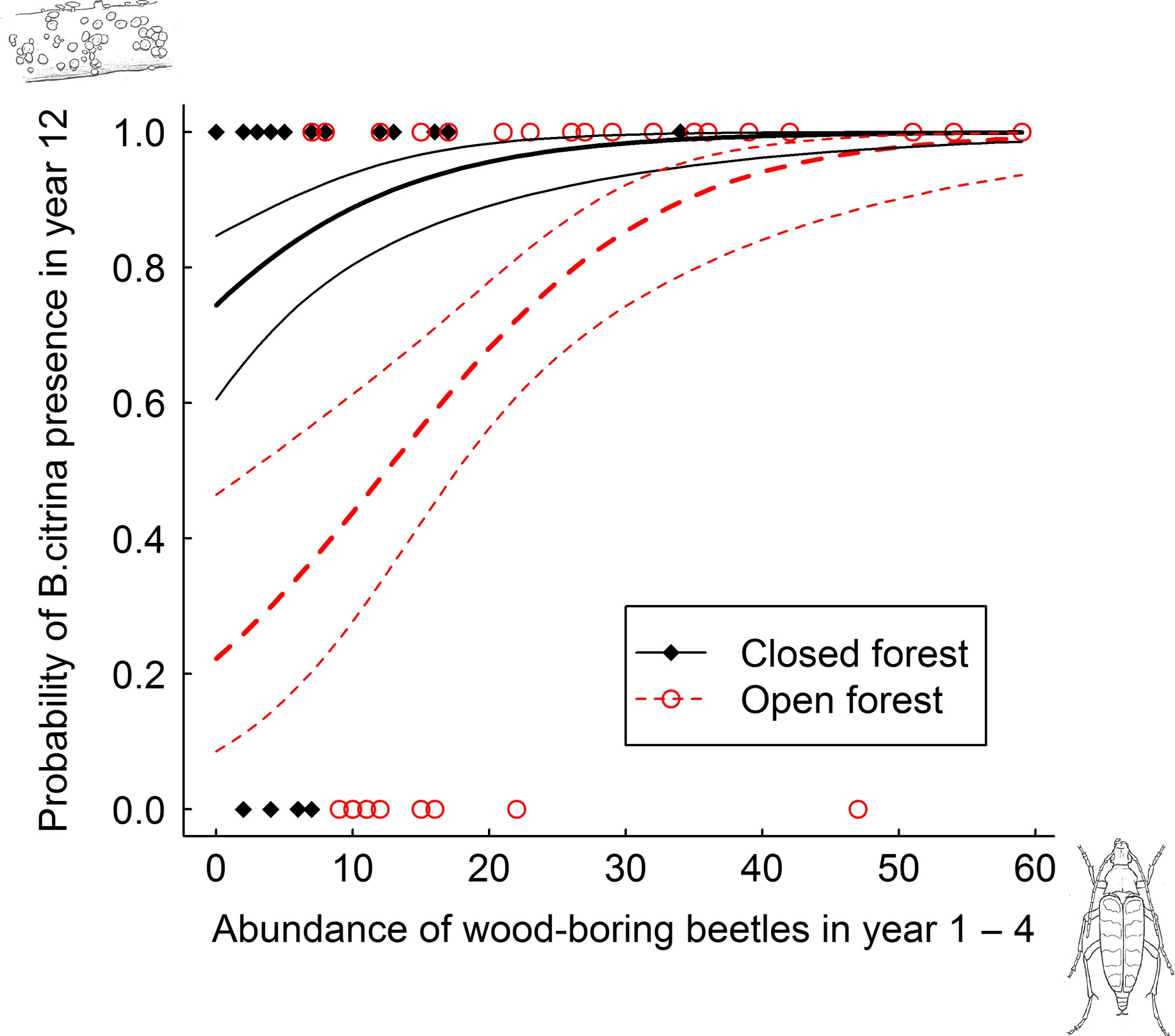
We studied the assembly of dead wood communities by felling an aspen tree at each of 60 sites, trapping insects the following 4 years and registering fungal fruiting bodies after 12 years. Insects in early succession of dead wood seemed to exert priority effects on the wood-decay fungi in late succession. Wood-boring beetles functioned as ecosystem engineers that altered the substrate, while fungivorous beetles seemed to have a species-specific effect on the fungi that might stem from spore dispersal.
Population genetic structure of Bellamya aeruginosa (Mollusca: Gastropoda: Viviparidae) in China: weak divergence across large geographic distances
- Pages: 4906-4919
- First Published: 13 October 2015
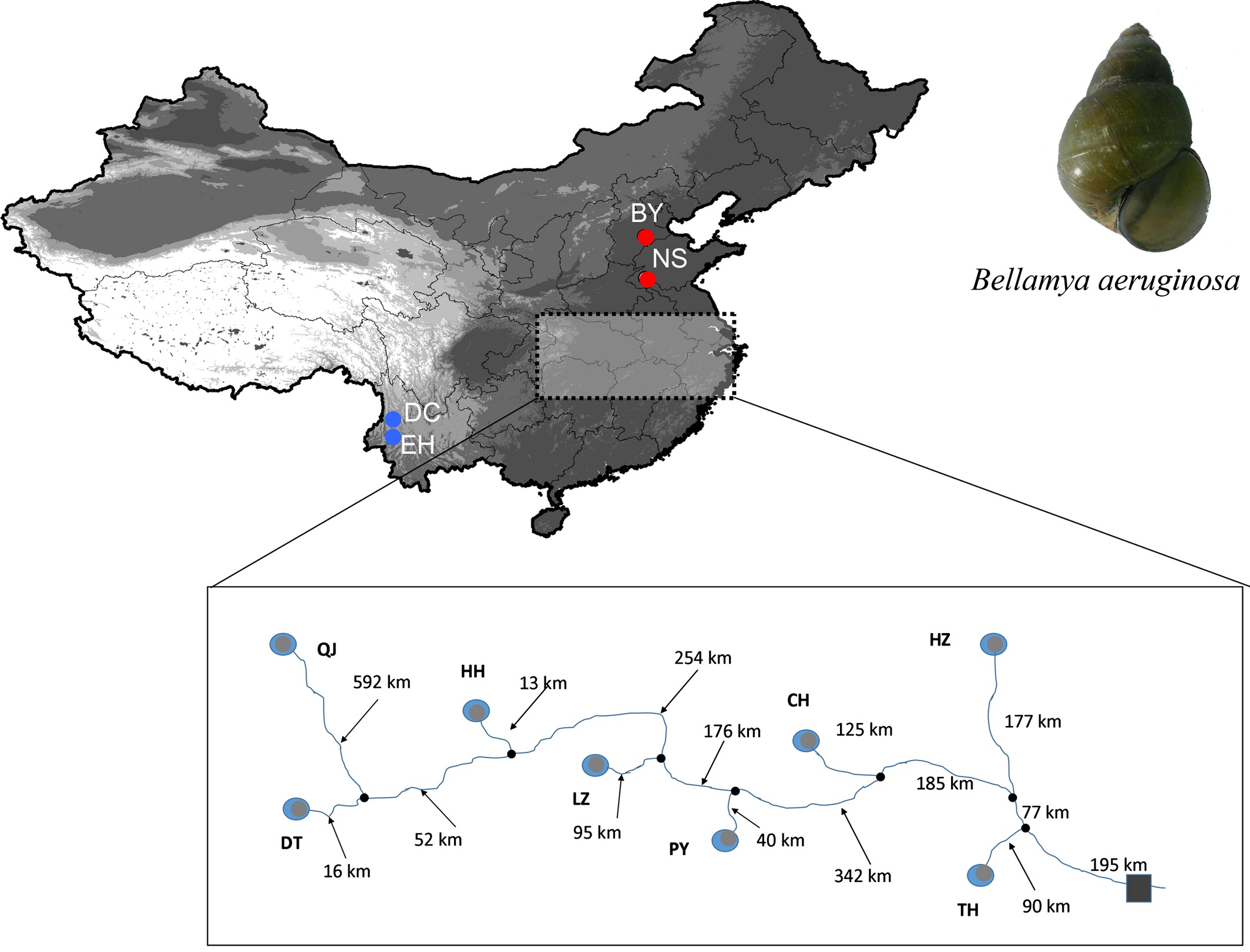
High levels of intra-population genetic diversity and low inter-population differentiation was found in Bellamya aeruginosa in China. Population sizes were intermediate to large and levels of gene flow were high suggesting that both gene flow and population size help to maintain high genetic variation. Gene flow occurred even between far distant populations, likely as a result of passive dispersal during flooding events, zoochoric dispersal and possibly anthropogenic translocations.
multimark: an R package for analysis of capture–recapture data consisting of multiple “noninvasive” marks
- Pages: 4920-4931
- First Published: 13 October 2015

The open source R package 'multimark' is the first accessible software allowing practitioners to perform capture-recapture analyses using multiple “non-invasive” marks. The package will be most useful to ecologists seeking to combine different sources of capture-recapture data that are difficult (or impossible) to reliably reconcile, particularly with the sparse datasets typical of rare or elusive species for which multiple non-invasive sampling techniques are increasingly employed.
Spatial pattern of adaptive and neutral genetic diversity across different biomes in the lesser anteater (Tamandua tetradactyla)
- Pages: 4932-4948
- First Published: 15 October 2015
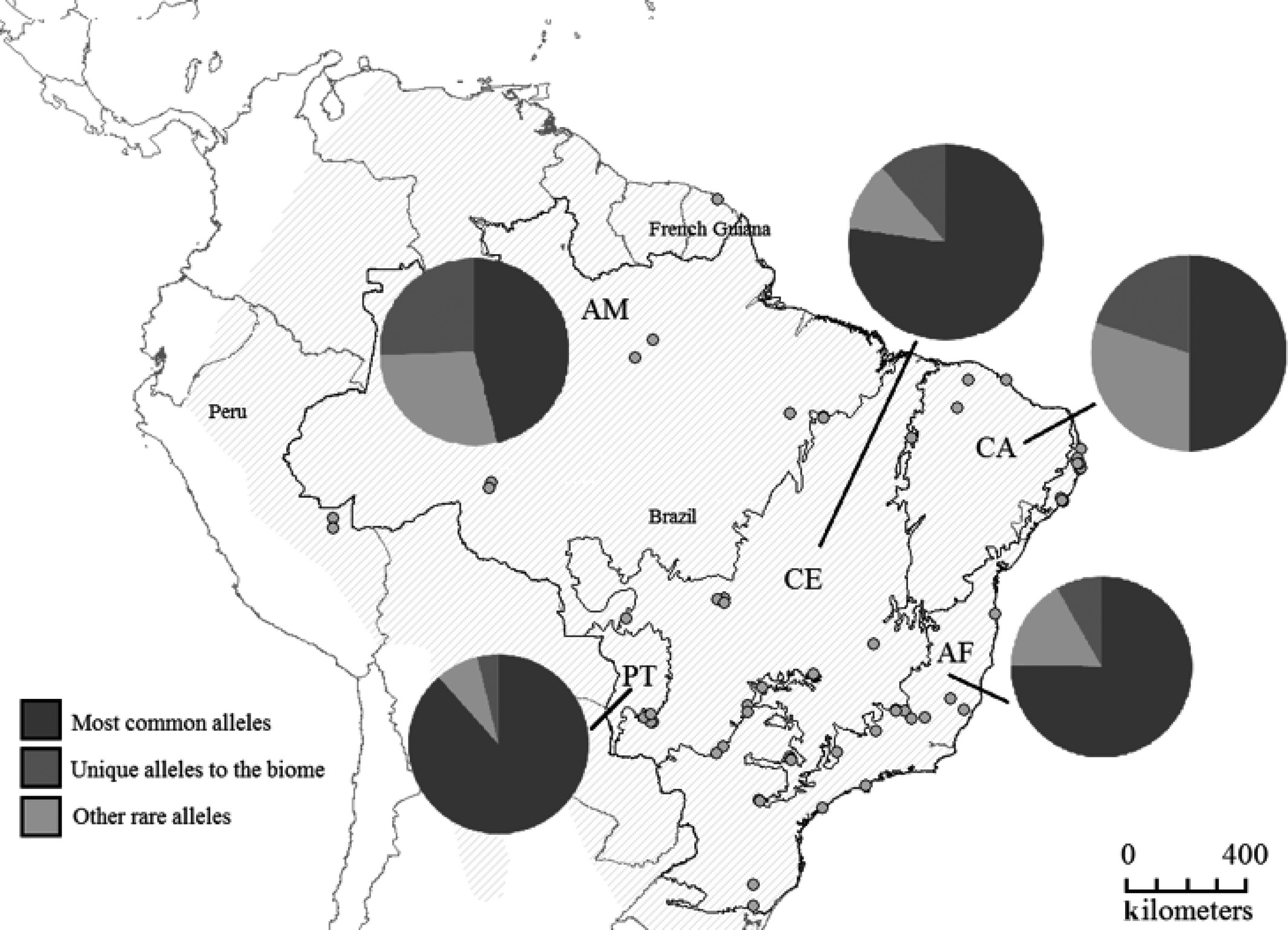
We investigated the spatial distribution of DRB exon 2 gene diversity of the lesser anteater (Tamandua tetradactyla) across five Brazilian biomes using next-generation sequencing and compare the MHC pattern with that of neutral markers (microsatellites). Higher MHC allelic richness and proportion of private alleles were found in rain forest biomes, especially Amazon forest, a megadiverse biome, possibly harboring greater pathogen richness as well. Thus, we find high patterns of MHC diversity consistent with historical balancing selection; however, pattern of variation among populations resembled those found using microsatellites.
Winners always win: growth of a wide range of plant species from low to future high CO2
- Pages: 4949-4961
- First Published: 15 October 2015
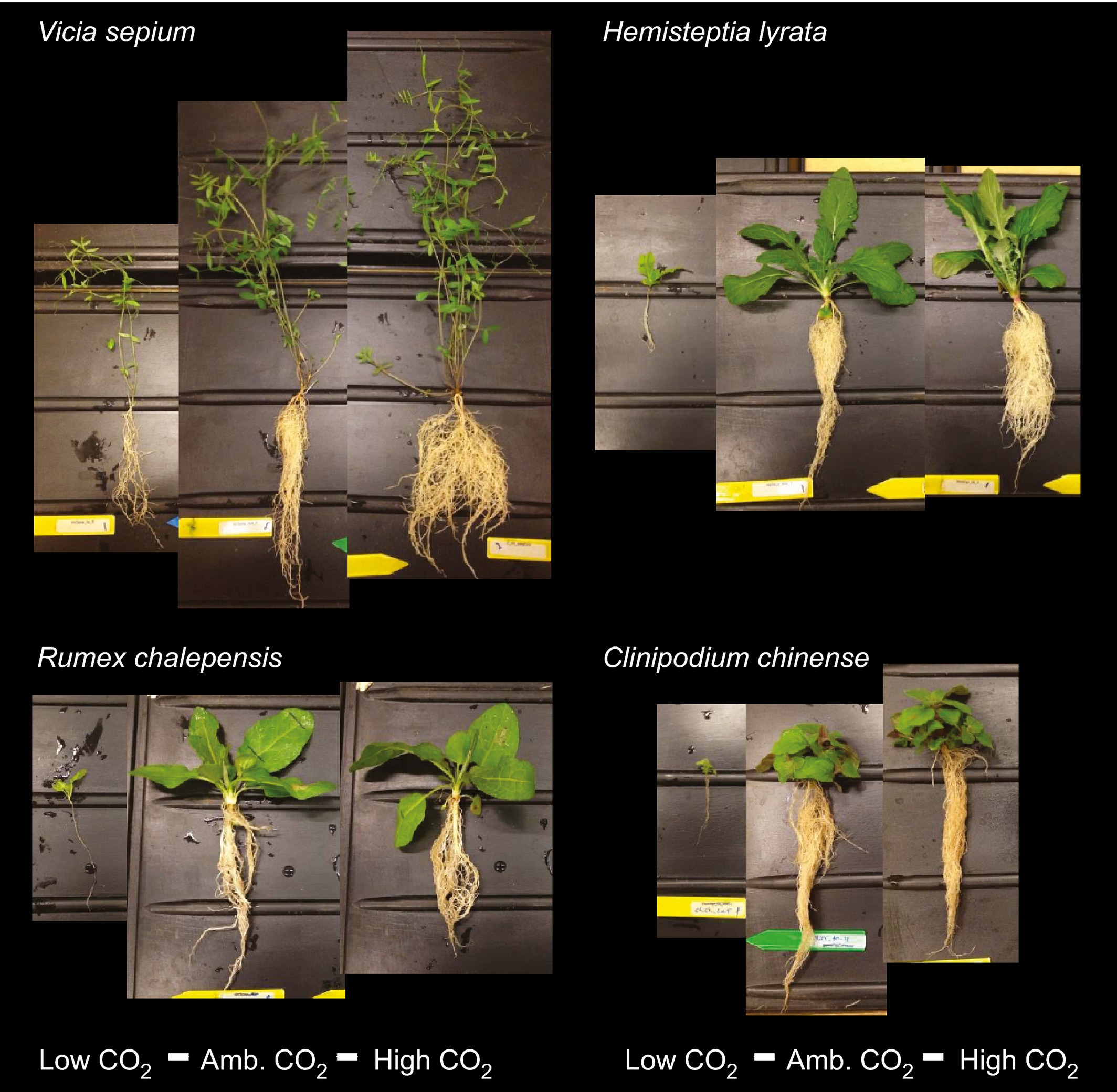
Evolutionary adaptation to variation in resource supply has resulted in plant strategies that are based on trade-offs in functional traits. For up to 28 C3 species (16 forbs, 6 woody and 6 grasses) we analysed if such trade-offs are apparent in growth and morphology responses to past low, current ambient and future high CO2 concentrations. We found no trade-offs in morphological and growth responses to CO2 variation. Winners continued to win, regardless of CO2.
Ecological genetics of range size variation in Boechera spp. (Brassicaceae)
- Pages: 4962-4975
- First Published: 15 October 2015
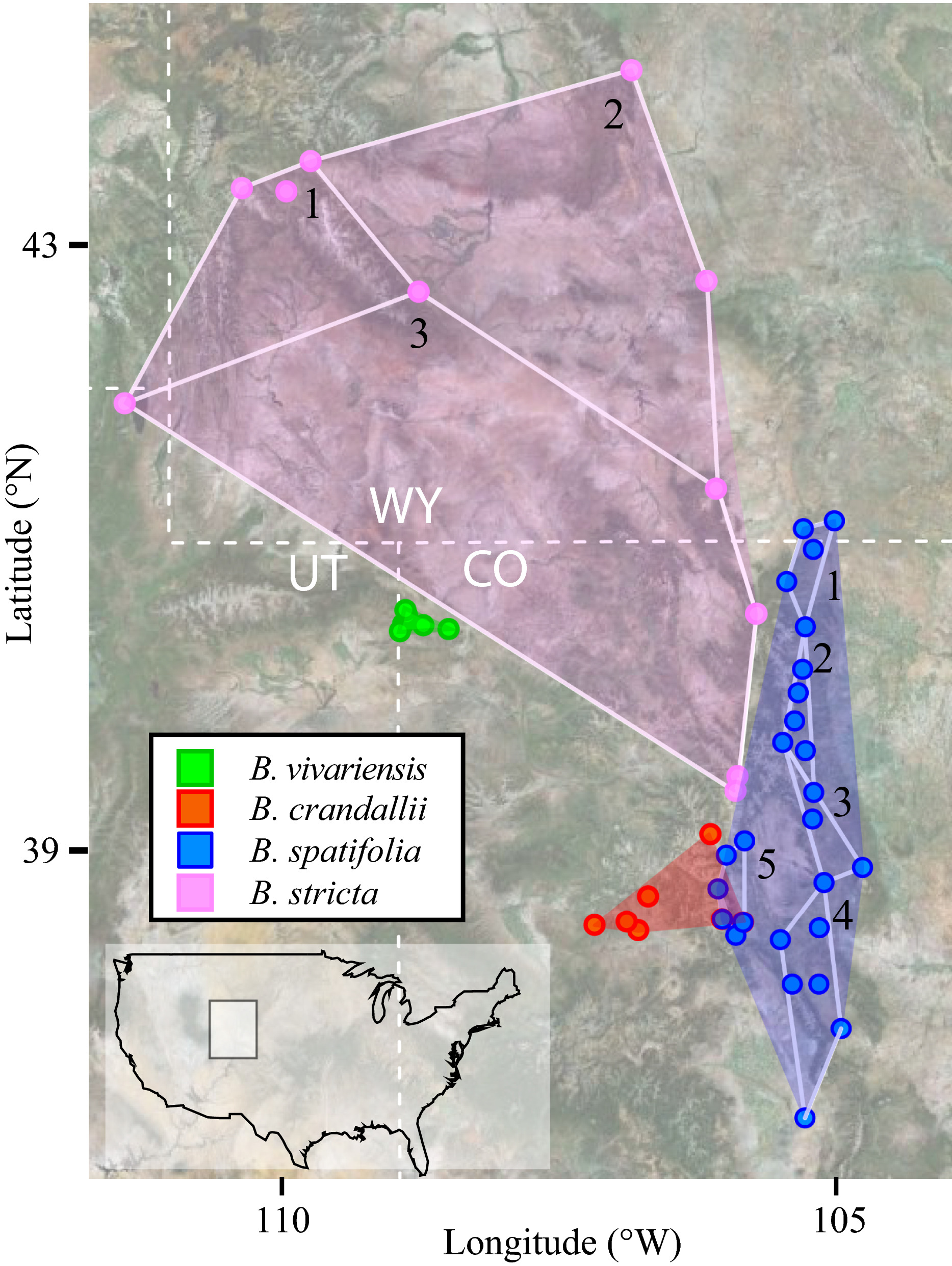
Through comparisons between geographically restricted species, and more widespread congeners, we assess the hypothesis that rare species lack characterizes that permit ecological persistence through and adaptive evolution to novel environmental conditions. We find that decreased plasticity and lower quantitative trait structure may limit both the breadth of conditions tolerated by individuals rare plants and may impact the potential for adaptation to novel environments.
Predator-driven elemental cycling: the impact of predation and risk effects on ecosystem stoichiometry
- Pages: 4976-4988
- First Published: 15 October 2015
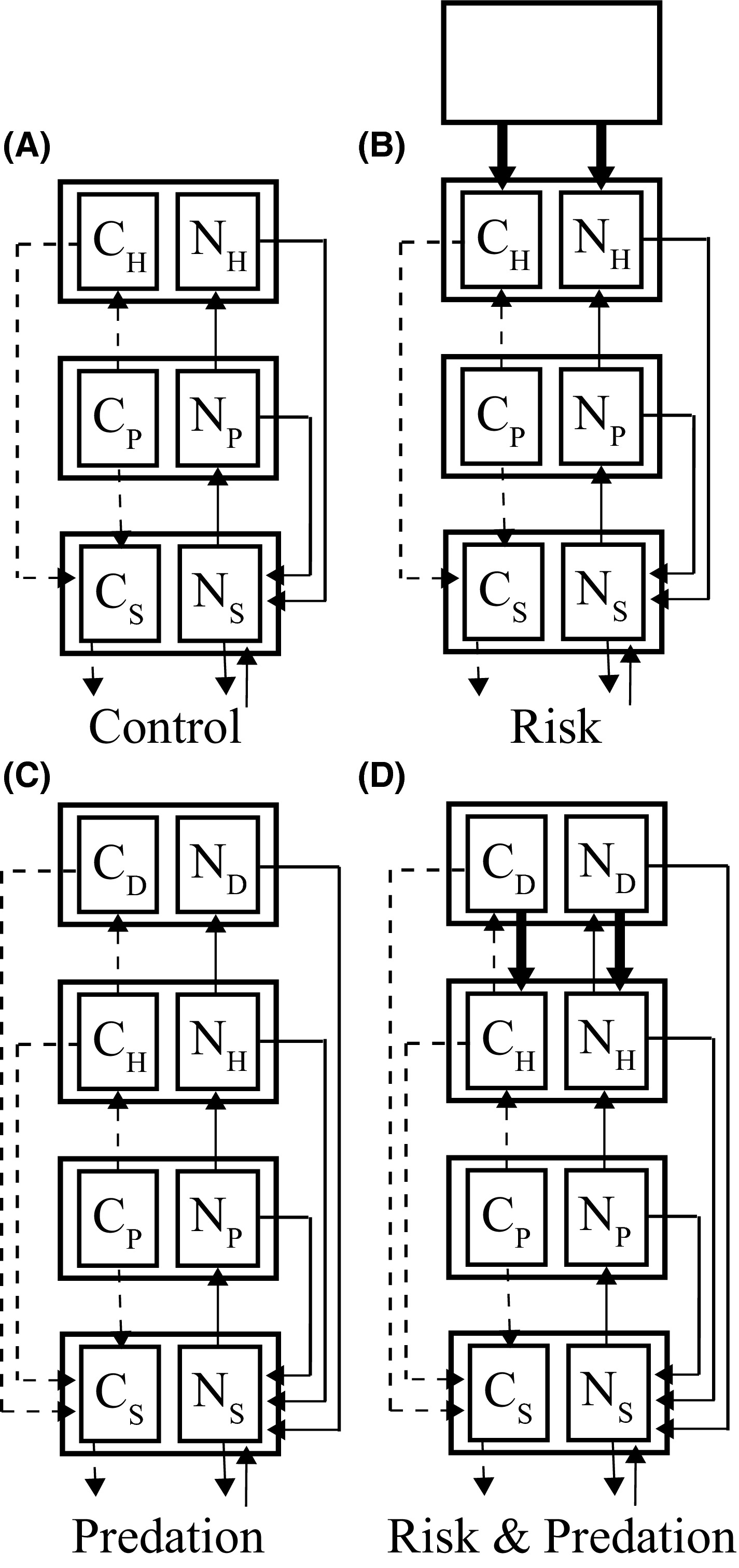
We present a theoretical framework for exploring consumptive and nonconsumptive effects of predators on ecosystem elemental cycling. Our analysis reveals that predators can have quantitatively important effects on elemental cycling, relative to a model formalism that excludes predator effects. Furthermore, the feedbacks due to predator nonconsumptive effects often have the quantitatively strongest impact on whole ecosystem elemental stocks, production and efficiency rates, and recycling fluxes by changing the stoichiometric balance of all trophic levels.
Effects of prolonged drought on the anatomy of sun and shade needles in young Norway spruce trees
- Pages: 4989-4998
- First Published: 15 October 2015

In our study we found that sun needles had significantly higher values than shade needles for all anatomical traits. In sun needles drought reduced all trait values, whereas in shade needles only tracheid maximum diameter was reduced by drought. The observed changes in needle anatomy provide new understanding of how Norway spruce adapts to drought stress and may improve predictions of how forests will respond to global climate change.
Predictors of male insemination success in the mosquitofish (Gambusia holbrooki)
- Pages: 4999-5006
- First Published: 15 October 2015
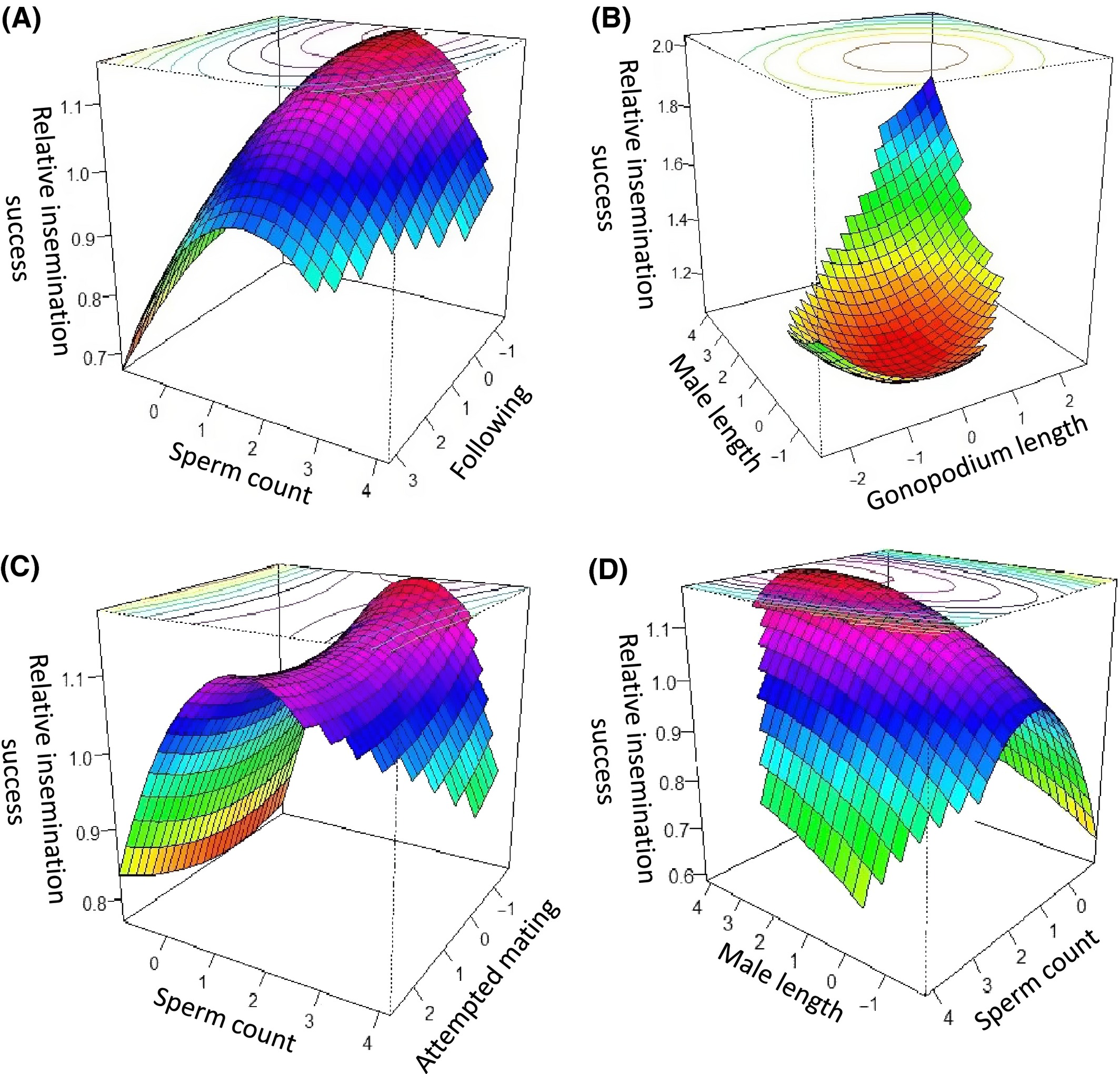
In mating systems that are dominated by male sexual coercion, little is known about how female mate choice contributes to sexual selection. Our results suggest that female mate choice is important in determining net sexual selection in a sexually coercive species when the effects of male–male competition are excluded.
THIS ARTICLE HAS BEEN RETRACTED
Retracted: Screening of candidate genes and fine mapping of drought tolerance quantitative trait loci on chromosome 4 in rice (Oryza sativa L.) under drought stress
- Pages: 5007-5015
- First Published: 15 October 2015
Original Research
Exceptional avian herbivores: multiple transitions toward herbivory in the bird order Anseriformes and its correlation with body mass
- Pages: 5016-5032
- First Published: 15 October 2015

Herbivory is rare among birds and is usually thought to have evolved predominately among large, flightless birds due to energetic constraints or an association with increased body mass. Dietary data compiled from over 200 published studies show that the bird order Anseriformes, which includes ducks and geese, have undergone at least five independent transitions toward a predominately herbivorous diet. Additionally, phylogenetic analyses reveals no significant correlation between the extent of herbivory and body mass.
Macroscale intraspecific variation and environmental heterogeneity: analysis of cold and warm zone abundance, mortality, and regeneration distributions of four eastern US tree species
- Pages: 5033-5048
- First Published: 16 October 2015

Macro-ecological study of intraspecific variation of abundance, mortality and regeneration of four eastern US tree species. Unravels response of demographic variables to environmental heterogeneity via climatic zones relevant to forest management under changing climate. The methodology can be used to explore dynamics of local adaptation.
Red mason bees cannot compete with honey bees for floral resources in a cage experiment
- Pages: 5049-5056
- First Published: 16 October 2015
Predicting bird phenology from space: satellite-derived vegetation green-up signal uncovers spatial variation in phenological synchrony between birds and their environment
- Pages: 5057-5074
- First Published: 19 October 2015
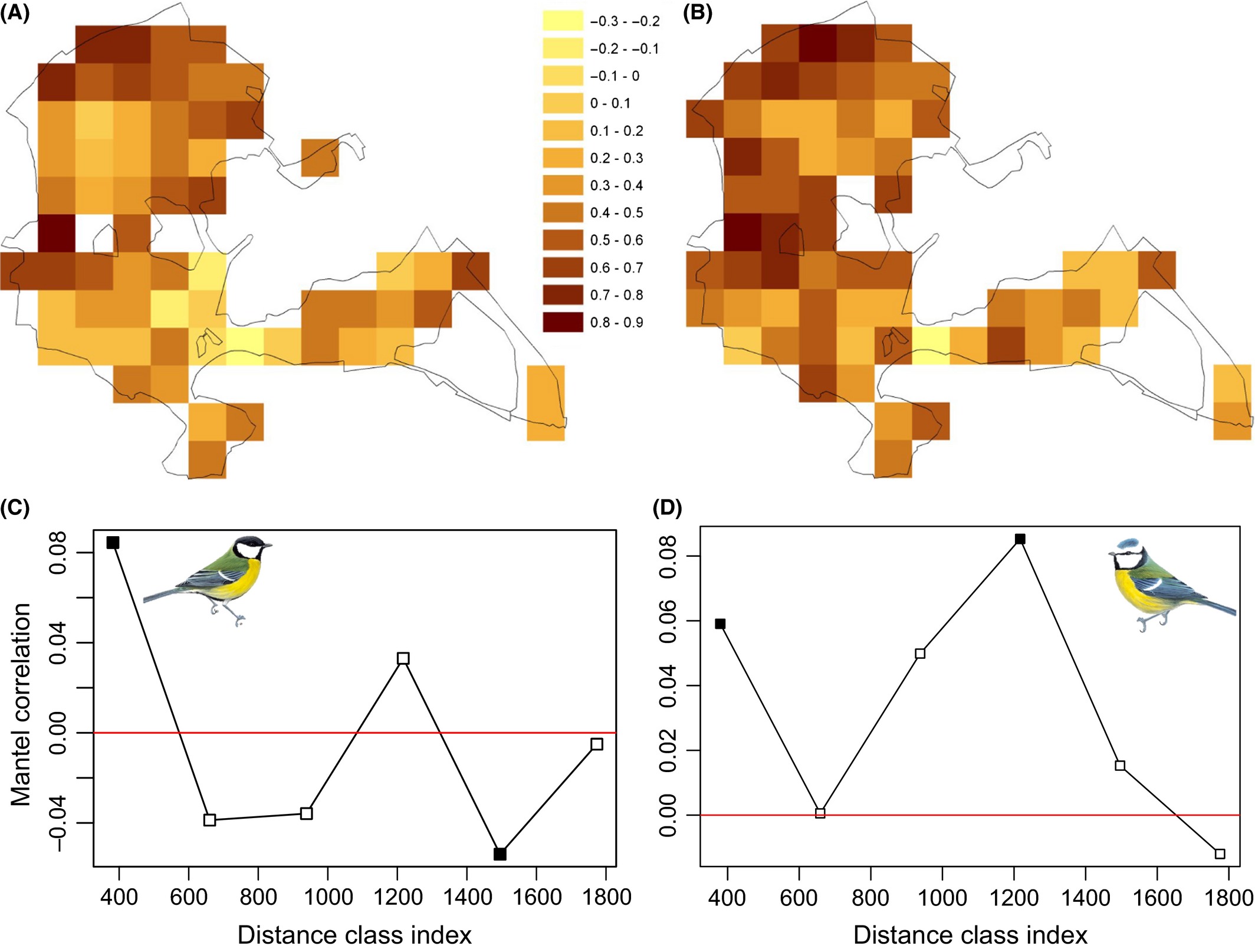
Current understanding of how animals synchronise life history events, such as the production of offspring, with the phenology of their food source is limited by the fact that the majority of studies simply correlate average phenotypes across years, neglecting a potentially important spatial dimension in the environment within populations. In this study we use the classic tri-trophic system of passerine songbirds, caterpillars, and deciduous tree to explore whether satellite-derived measures of vegetation spring green-up can be used to predict within-population variation in great tit (Parus major) and blue tit (Cyanistes caeruleus) breeding phenology. We show that timing of reproduction in both species correlates positively with local vegetation green-up at the population and individual levels, and that there is marked spatial variation across the study site in the strength of this phenological matching, which can be predicted by habitat type.
A spatially explicit capture–recapture estimator for single-catch traps
- Pages: 5075-5087
- First Published: 19 October 2015
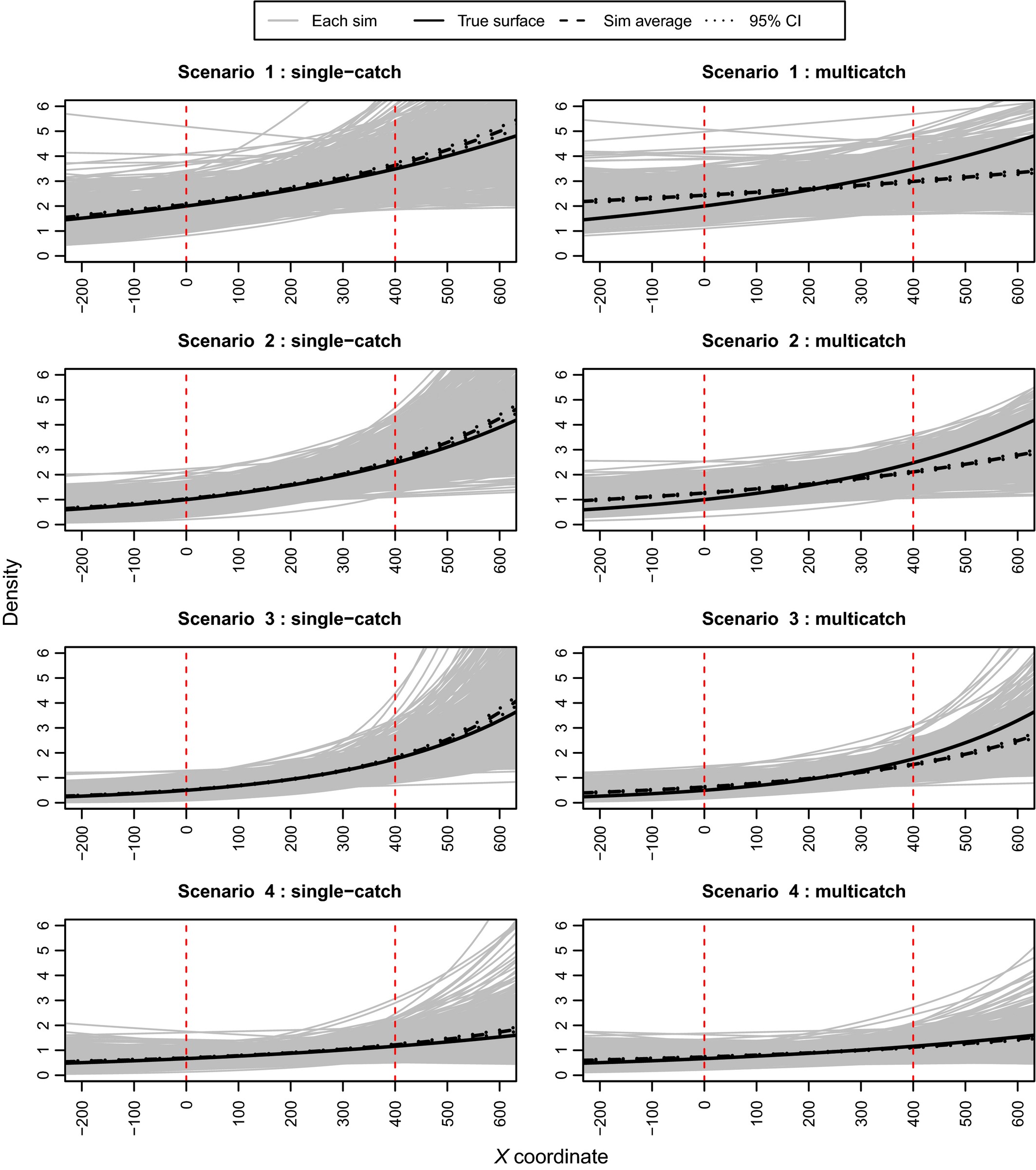
Single-catch traps are frequently used in live-trapping studies but an appropriate likelihood for this case has proven elusive and inference is usually based on a likelihood for multicatch traps. We develop a single-catch trap likelihood and estimator based on observed capture times and compare its performance by simulation to that of the multicatch estimator when animal density varies in space. While the multicatch estimator is found to be a robust estimator of average density, its performance deteriorates with high trap saturation and increasing density gradients. By contrast, the single-catch estimators are found to be nearly unbiased in all scenarios. If accurate estimation of the detection function is of interest, or if density is expected to vary substantially in space, then there is merit in using the single-catch estimator.
Population genetic analyses are consistent with the introduction of Ceramium secundatum (Ceramiaceae, Rhodophyta) to Narragansett Bay, Rhode Island, USA
- Pages: 5088-5095
- First Published: 19 October 2015

During surveys of the macroalgal flora along the northwest Atlantic coast we discovered a population of Ceramium secundatum in Rhode Island, USA. This species is regarded as common and widespread in the northeast Atlantic but until now has not been reported from the western Atlantic. We conducted population genetic analyses (using the cox2-3 spacer) to compare genetic variation within the Rhode Island C. secundatum population relative to native populations in the Republic of Ireland and the United Kingdom which, has supported the hypothesis that C. secundatum is a recent introduction to Rhode Island.
Plasma markers of oxidative stress are uncorrelated in a wild mammal
- Pages: 5096-5108
- First Published: 19 October 2015
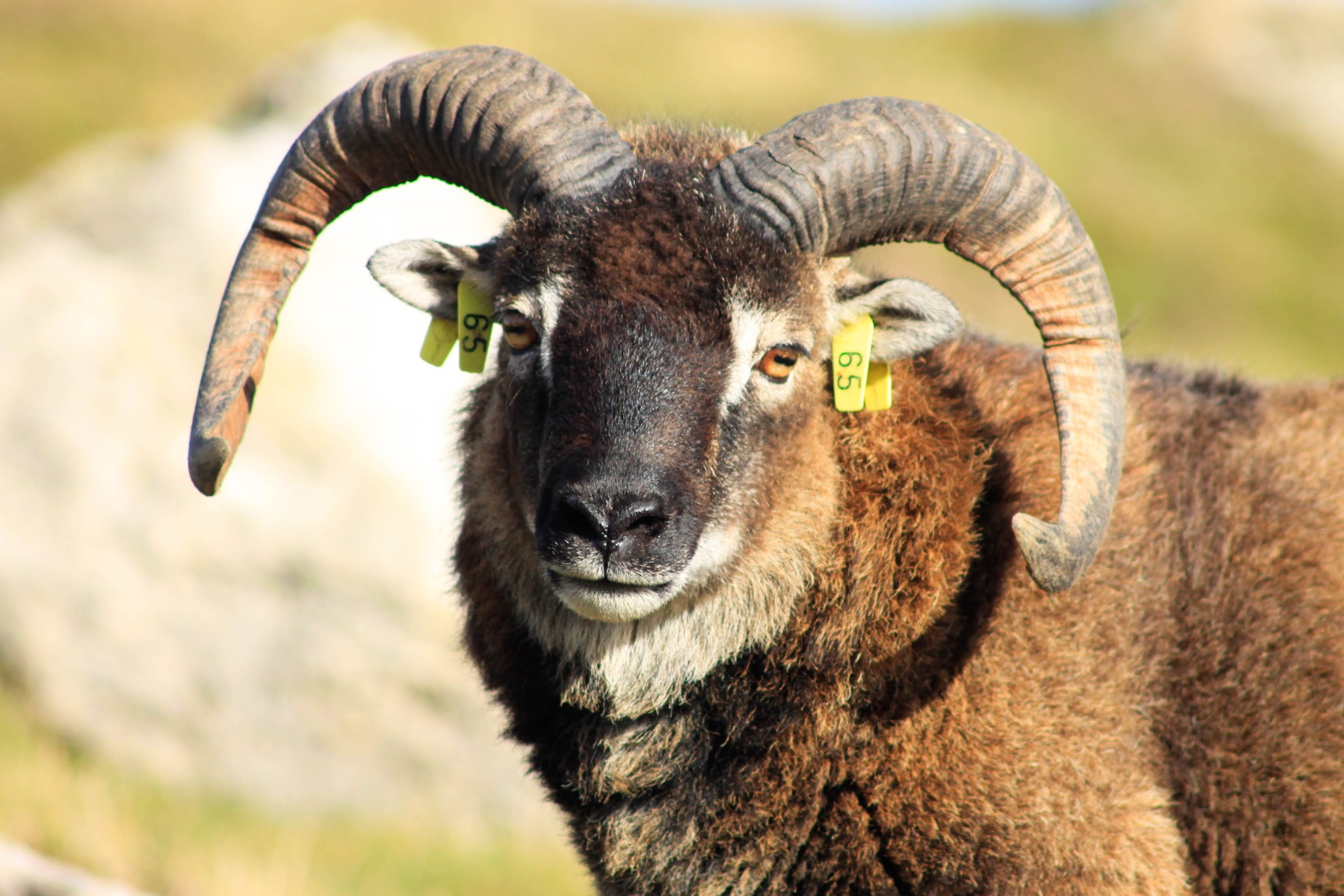
We measured four widely used markers of oxidative stress in a wild population of Soay sheep, St. Kilda, to investigate the correlation structure among these. We found dramatic among year variation in oxidative stress and no evidence of consistent correlations among markers. This suggests that each marker might reflect different and potentially uncoupled biochemical processes.
Experimental evidence of bark beetle adaptation to a fungal symbiont
- Pages: 5109-5119
- First Published: 19 October 2015
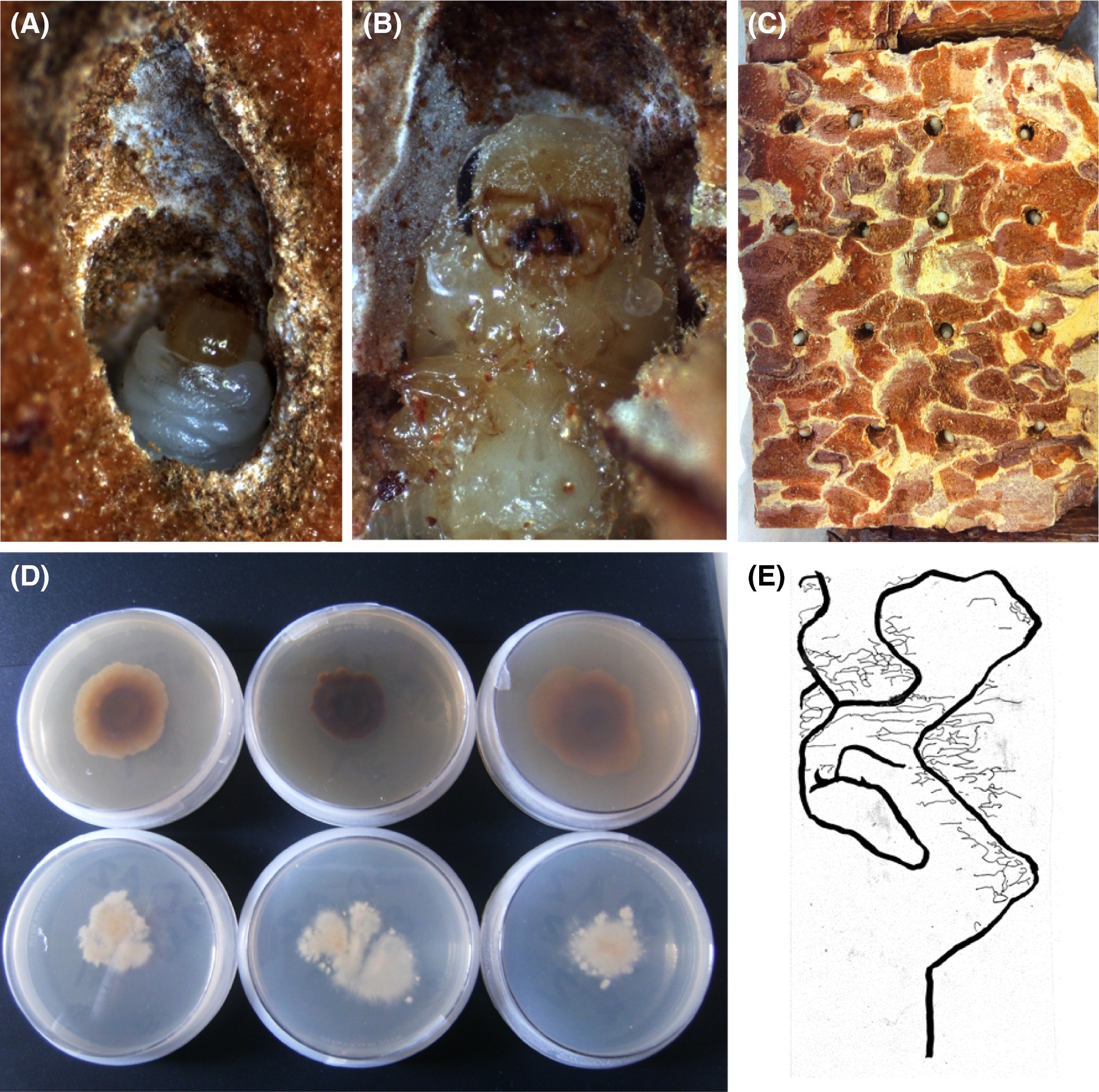
How ectosymbioses are maintained through evolutionary time is not well understood. Here, we experimentally manipulated a bark beetle–fungus symbiosis and for the first time demonstrate the obligate nature of the relationship. Further, we find evidence of beetle adaptation to a fungal genotype with a shared evolutionary history.
Differential effects of climate and species interactions on range limits at a hybrid zone: potential direct and indirect impacts of climate change
- Pages: 5120-5137
- First Published: 19 October 2015
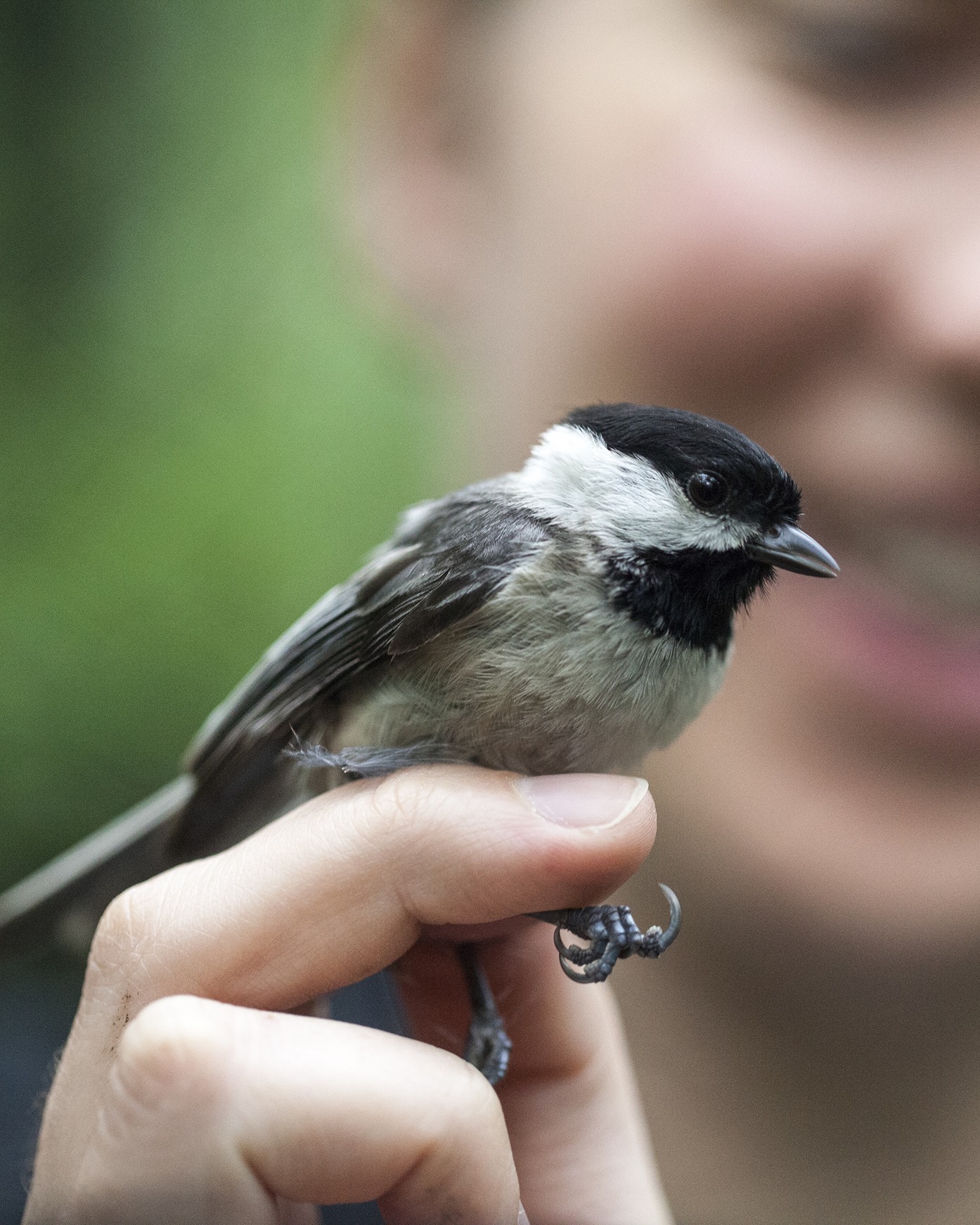
Understanding the interplay between abiotic and biotic factors in determining species ranges has implications for hybrid zone position and movement. Here, we use SDM to tease apart the factors responsible for the current position of an avian hybrid zone, as well as to understand the potential effects of future climate change on hybrid zone position and movement. We find that along the hybrid zone, abiotic climatic factors are more important for regulating distribution patterns for one species, while interspecific interactions are more important for delimiting range limits for the other species.
An atypical reproductive cycle in a common viviparous Asia Agamid Phrynocephalus vlangalii
- Pages: 5138-5147
- First Published: 19 October 2015
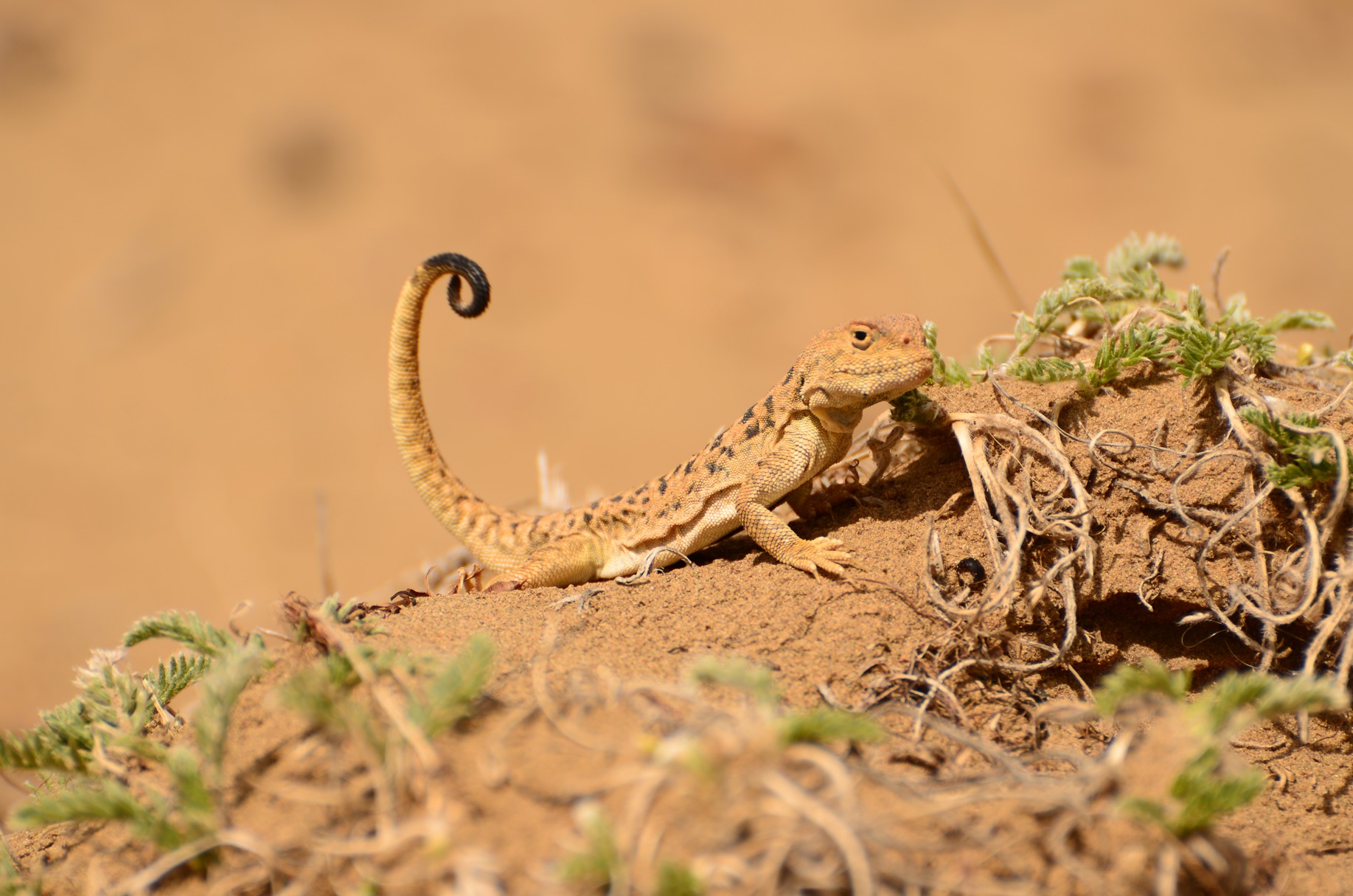
Viviparous lizards living in cold environments of high altitudes often exhibit atypical reproductive cycle, but detailed case studies are few. In this study, we examined the gonadal development cycle and age of sexual maturity of P. vlangalii. Perhaps more importantly, we explored the adaptation of this reproductive cycle by examining over-winter survival rates of their offspring. Our study will highlight reasons for evolution of atypical reproductive cycle in cold environments of high altitude.




